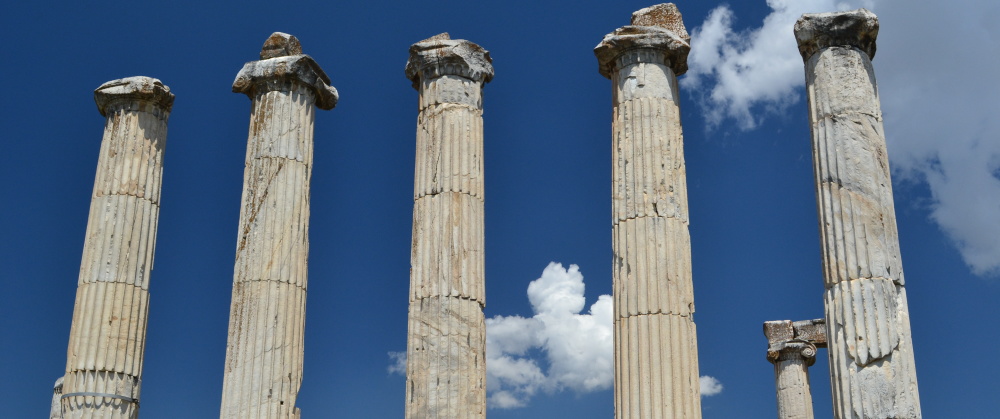While many Biblical scholars and laypersons know about the ossuaries of Caiaphas (the high priest mentioned in connection with Jesus’s crucifixion: Matt 26:3, 57; John 11:49; 18:13, 14, 24, 28) and of James the brother of Jesus, which is probably a forgery, there is a third ossuary with connections to earliest Christianity that has not received the attention that it deserves, that of a descendant of David.
(An ossuary is a receptacle in which the bones of a deceased Second Temple Jew were placed after the decomposition of their body)[1]
Between November 1971 and May 1972, Israeli archaeologist Amos Kloner found a limestone ossuary in a burial cave in Jerusalem. The cave itself dates to the Second Temple period (516 BC-AD 70) and more specifically to the turn of the Christian era. Pottery finds in the cave dated the earliest use of it to the first century BC. The latest date for use of the cave is AD 70, the year that the Romans destroyed the temple and much of Jerusalem.[2]
The ossuary contains two Aramaic inscriptions by two different hands. The first is on the top right corner of one of the ossuary’s longer sides. It is written in what the editors of Corpus Inscriptionum Iudaeae/Palestinae call a “crude” script that says “Shalom Hillel (?)” (שלם הלל) (The name Hillel is uncertain because the first two letters, הל, are not entirely clear). The second inscription is written in an unusual place, on the rim of the ossuary in a nice “formal” script that says “of David’s house” (שלבידוד).
Much about this ossuary’s inscriptions remains opaque. The first one is difficult to read so the bones of the person interned is unclear. In addition, it is unclear if Shalom is a greeting or the name of a person, probably a woman, whose bones may also have been in the ossuary. In the second inscription, the text could mean “son of David” or “house of David.” The latter reading appears to be the most probable.[3] The final uncertainty about these inscriptions revolves around what I have translated David, דוד. The word has two possible meanings, either uncle or David. David Flusser has made a persuasive case for the latter reading, which the editors of Corpus Inscriptionum Iudaeae/Palestinae follow.[4]
Provided that this interpretation is correct, then whoever engraved the second inscription was making the claim that the occupant of the ossuary was a descendant of the Biblical David. In support, to date we know of no Second Temple Jews named David, from which one could have traced their ancestry. A number of later Jewish and Christian texts such as the church historian Eusebius and the Talmud claim that descendants of the Biblical David were alive and well in the first century AD (in the former text the emperor Domitian even questioned them!). It is of import that the authors of Matthew, Mark, Luke-Acts, Revelation, and Paul the apostle refer to Jesus’s Davidic ancestry in some way. One of the earliest of these chronological references is in Romans, which Paul wrote about AD 57. The apostle begins the letter by introducing himself and the gospel that he preaches to the Roman Christians. As he does so, he highlights Jesus’s Davidic descent:
Paul, slave of the Messiah Jesus, called apostle set apart for God’s gospel that he proclaimed beforehand through his prophets in the holy scriptures about his Son who was descended from the seed of David according to the flesh and who was decreed God’s Son in power according to the Spirit of holiness by the resurrection from the dead, Jesus the Messiah our Lord (Rom 1:1-4; my translation).[5]
There is general agreement among scholars that Paul’s reference to Jesus’s descent from David and declaration as God’s Son at his resurrection in Rom 1:3-4 is an early Christian tradition and/or proclamation that predates Paul’s conversion.[6] What is more, the apostle appears to expect that the Roman Christians, who belong to a church that he did not establish, are aware of Jesus’s Davidic heritage. This means that from the earliest traceable period of earliest Christianity Jesus’s Davidic and thus royal messianic heritage was a fundamental part of the movement. Recently, Matthew Novenson has pointed out that there are no recorded ancient challenges either by Jews or Christians to Jesus’s Davidic ancestry. He notes that some ancient Jews denied Jesus’s identity as the Messiah “but not on genealogical grounds.”[7]
In sum, this small inscription on an ossuary illuminates a lost piece of Second Temple Jewish history in which Jews of the period boasted of their familial heritage and provides a reason why Jesus’s Davidic ancestry went unquestioned.
[1] Ossuary is the singular English form of the noun, which derives from the Latin ossuarium, meaning “a receptacle for bones.”
[2] David Flusser, “‘The House of David’ on an Ossuary,” The Israel Museum Journal 5 (1986): 37-40.
[3] Ibid.; CIIP 1.1.45.
[4] Flusser, “‘The House of David’,” 37-40; CIIP 1.1.45.
[5] Παῦλος δοῦλος Χριστοῦ Ἰησοῦ, κλητὸς ἀπόστολος ἀφωρισμένος εἰς εὐαγγέλιον θεοῦ, ὃ προεπηγγείλατο διὰ τῶν προφητῶν αὐτοῦ ἐν γραφαῖς ἁγίαις περὶ τοῦ υἱοῦ αὐτοῦ τοῦ γενομένου ἐκ σπέρματος Δαυὶδ κατὰ σάρκα, τοῦ ὁρισθέντος υἱοῦ θεοῦ ἐν δυνάμει κατὰ πνεῦμα ἁγιωσύνης ἐξ ἀναστάσεως νεκρῶν, Ἰησοῦ Χριστοῦ τοῦ κυρίου ἡμῶν.
[6] Joseph A. Fitzmyer, Romans, AB 33 (New York: Doubleday, 1993), 227-30.
[7 ]Matthew V. Novenson, The Grammar of Messianism: An Ancient Jewish Political Idiom and Its Users (Oxford: Oxford University Press, 2017), 89.
